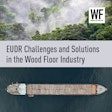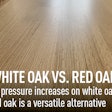So which house would YOU buy, the one that “includes a natural water feature,” or the one that is “in the middle of a swamp?”
Real estate agents have long appreciated careful language selection and many a buyer may well have regretted buying that house with “potential.” Salesmen of any product develop their own jargon, and a doctor’s interaction with patients may be filled with euphemisms, as if that will make bad news any less painful. We’re always looking to put the proper “spin” on things, right?
But marketing departments don’t always need to get creative with clever misdirection—sometimes it’s as easy as picking the right word. Words have power. We know that. And the meaning and power certainly can change over time. (I’ve lost track, is “bad” still “good” now?) Our language is a living one and is constantly changing to reflect our current culture. And our society constantly assigns new values to words.
I got to thinking about this during discussions with James Kennedy about emotive language, specifically “natural” vs. “artificial,” “chemical” or “synthetic.” These words are no longer simply factual descriptions, but are heavy with emotion, carrying often-undeserved weight.
He told me about an app called “Think Dirty” which gives consumer products (heavy to cosmetics) a “safety” rating based on the ingredient list. As one of many considerations, the app gives any product with an ingredient identified as “Fragrance” the worst possible rating, while “Natural Fragrance” gets the best rating. The rationale the app gives is a good one in part—the site explains that “fragrance” is non-specific and they want total transparency in the ingredient list. So they assume the worst based on lack of knowledge. Unfortunately they don’t treat the term “natural fragrance” the same way and as those readers who have gone through my chemophobia blogs know, just because it is somehow “natural,” doesn’t mean it’s not a problem for someone—anyone want to roll around in some poison ivy? Despite the logic of seeking transparency, the app clearly has real bias embedded into its ratings, as evidenced by this sample text pulled from the site’s blog:
“…so moms can bathe their baby without worrying about sneaky synthetic fragrances or preservatives that sometimes hide in drugstore brands.”
James also pointed me toward a study by Boyka Bratanova at Abertay University where identical cookies were labeled as either “normal” or “organic/locally-produced/carbon-neutral.” You know where this is going: People believed the “organic” cookies tasted better. It reminds me of an old bit by Penn & Teller where they went to a farmer’s market and cut a banana in half and put it out for tasting, with one half labeled as organic and the other half as “non-organic.” Nine out of ten people tasting the two halves found the “organic” banana to be far superior in taste and texture. It was the SAME banana, folks… In the same casual taste-test study, Penn & Teller found that 71% of the shoppers (who were there specifically to buy only organic food) preferred non-organic tomatoes over the organic ones and 80 percent guessed incorrectly when asked to identify samples of organic apples. Never doubt the power of words again!
James’s blog goes into detail on the issue of advertising based on “moral superiority,” noting:
“Manufacturers are taking advantage of this psychological trick by writing meaningless claims of moral superiority such as “natural”, “pure” and “free from {insert harmless ingredient here}” on their product labels to justify price increases at the point of sale.”
Simply put: “green-washing.”
Is a No Added Formaldehyde (NAF) product better than one produced with something containing formaldehyde? Not automatically.
Is a No Added Formaldehyde (NAF) product better than one produced with something containing formaldehyde? Not automatically. It may have other emissions that aren’t being disclosed. It might be structurally weaker, which certainly makes it less green if it falls apart after a few years. It might also be perfectly fine. It is not automatically the content that makes a product better or worse. It’s the entire package—the sum total.
I often talk about buying based on value, not on price. Value is (or at least should be—society is slowly changing that word to a negative, a euphemism for “cheap”) a lot of things together, including, of course, the cost. But it also includes service and quality features and availability and a host of other factors. The best-valued product is not always the cheapest. And we should also value things differently as individuals, and that’s fine. You can put your dollars down on the value point that is most significant to you, be it the source or the salesman’s smile or the size or … but don’t be swayed by misleading words like “natural,” or statements about no blueberries being in this particular apple pie. Even when factual, they may not be meaningful.
Last note on value—we only appreciate value points when we know about them. In absence of other information, we can only consider the available facts or ideas. I heard a speaker once talk about the example of hiring a car service. He called 10 companies and asked each for a price quote for the trip. Each gave a price and he picked the cheapest. Why? Because he had no other point of comparison. Not one company offered anything else—nothing about the quality of the cars, or the company’s safety record, or their on-time guarantee or anything else. In the absence of other data points, he could make his selection based only on one point, the price. If the only value a company is giving me is the rather nebulous term “natural,” then I’m wondering if that is the ONLY thing they have to sell. No other quality points to promote?
It is up to the industry to give the consumer all the information they need to make a properly informed choice about the full value of a product. And that specifically includes not trying to mislead about the apparent value of a single point. Words have weight, and we should be careful how we throw them around.
































